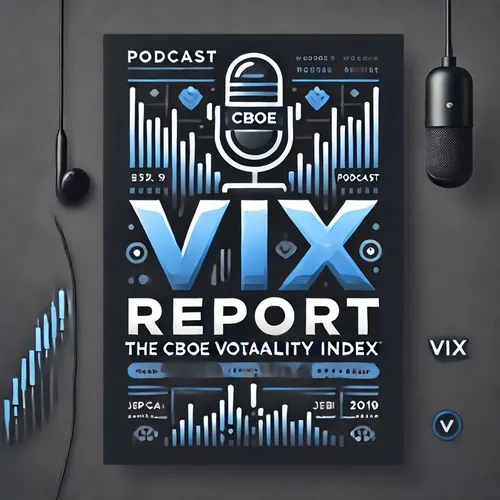Consistent Market Volatility Reflected in Stable VIX Index
- Author
- QP-1
- Published
- Wed 11 Jun 2025
- Episode Link
- https://www.spreaker.com/episode/consistent-market-volatility-reflected-in-stable-vix-index--66504347
The Cboe Volatility Index (VIX), often referred to as the "fear gauge," provides critical insight into market expectations of near-term volatility as conveyed through S&P 500 index options. Recently, the index has remained notably stable, reflecting a consistent market sentiment over the short term.
As of the close of June 10, 2025, the VIX Index held steady at 17.16. This value matched the previous day's close from June 9, marking no percent change and indicating a consistent outlook on market volatility. This stability follows a recent period of moderate fluctuations, with the index displaying some variability in early June but stabilizing thereafter. For instance, the VIX was recorded at 16.77 on June 6, peaking slightly at 18.48 on June 5, before settling back to lower levels.
This stability in the VIX suggests that market participants currently anticipate no imminent spikes in volatility, aligning with the steady trends seen in its 3-month counterpart, the VXV. On June 9, the VXV stood at 20.09, reflecting minimal fluctuation from previous days (20.02 on June 6, and 21.11 on June 5). This reinforces a broader sentiment of stability, suggesting the market's outlook for medium-term volatility is similarly stable.
The underlying factors influencing the VIX Index are diverse. Economic indicators such as GDP growth rates, inflation data, and employment statistics play significant roles. Recent economic reports have not drastically deviated from expectations, potentially contributing to the VIX's stability. Additionally, monetary policy remains a key driver. While central banks have maintained interest rates without dramatic shifts, any future policy changes could rapidly impact market volatility perceptions.
Geopolitical events also introduce potential volatility. However, the current geopolitical climate has not yielded unexpected disruptions that significantly affect the indices. This relatively calm backdrop, combined with steady economic data, has contributed to the VIX’s stabilization.
The inverse relationship between the VIX and the S&P 500 is another crucial element. When the S&P 500 experiences an upward trend, the VIX tends to decrease as investor confidence rises. The recent stability in the S&P 500 likely supports the steady VIX levels, reflecting a market that currently values predictability amidst broader economic and geopolitical conditions.
In conclusion, the VIX Index's recent behavior illustrates a period of relative calm in the market, with little anticipation of drastic changes in volatility. However, this stability does
